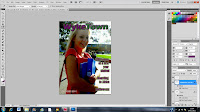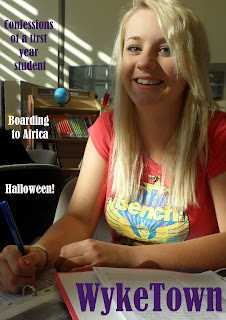The layout of this magazine consists of a short and dynamic title, a heading, other articles (these are put under a subheading saying “also in this issue” to make readers aware), a barcode, other artists which are included in the magazine.
The man in the main image is making eye contact with the audience and is an MCU. His face is clear with a pleased expression on his face. The subject is holding an award indicating he is one of the winners of the 2010 awards. He is dressed in a dark suit which is common for a classical music performer to wear. It the brand image represents classical music as mature and sophisticated.
“The best disks and the greatest artists – as voted by you” – this language is very direct and it is written as if they are speaking to the reader personally. There is the use of superlatives in this phrase to emphasise and exaggerate the talent of the musicians featured in the magazine, intensifying the readers’ interest. The heading “Winners Revealed!” is written in gold, it is upper-class lettering, and ends with an exclamation mark to raise enthusiasm and excitement. The gold also reflects the awards theme and the idea of winning 1st prize.
The colour scheme consists of two colours: black and gold which is presented on a light background – the black and white links to the idea of classical sheet music of which musicians use in their performances. The text uses anchorage by featuring one of the winners of the 2010 awards – this is relevant to what articles the magazine will feature and its target audience who are interested in classical music. The institution for this magazine is BBC. It is published monthly in the United Kingdom by BBC Worldwide, the commercial subsidiary of the BBC. Reflecting the broadcast output of BBC Radio 3, the magazine is devoted primarily to classical music and each edition is released with a free audio CD. 65% of readers are men while only 35% are women. 66% of the people who buy this magazine are counted within the ABC1 category.
The title is made more prominent by being presented in a conventional large font and the heading is in a smaller font size which is easy for the audience to read. The contents are teased down the side of the page and centred telling the reader who is included in the month’s issue.
The background is a large, lightened room which could resemble a concert hall. The musician’s dark clothes make him look more prominent against the well-lit background – this allows the audience to focus on the written text and main image. The classy and refined style of the cover acts as a connotation to show the magazine is passionate about the world of classical music and each month its reader’s unrivalled access to the greatest musicians and the sharpest writers. The plain colours are not aimed at a particular category (male or female readers) which gives a broader range. The date of publish is shown with the barcode and price to notify the reader that this is the latest publication of the monthly magazine.


































